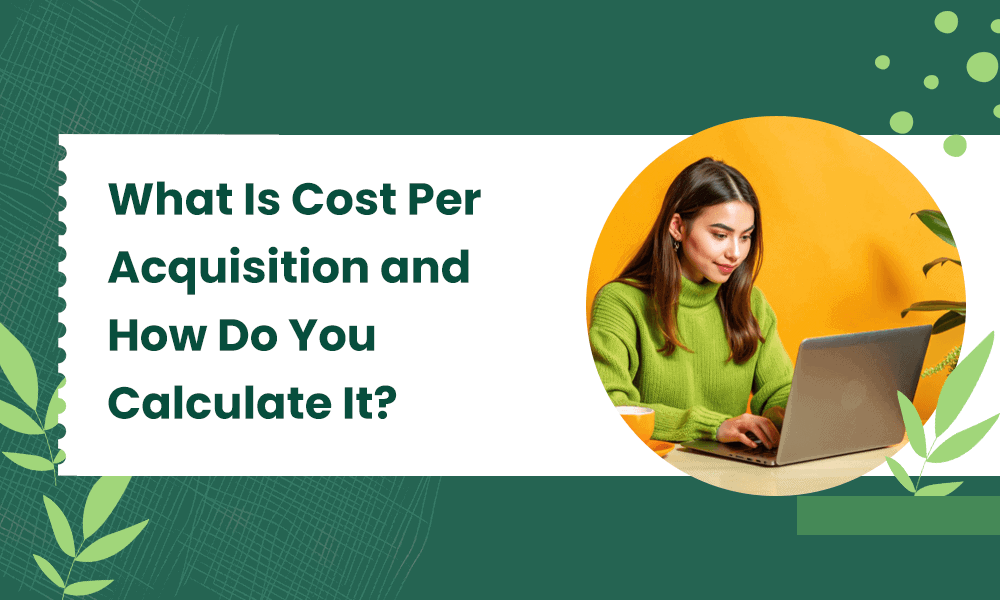If clicks are your main focus with your paid acquisition strategies, your marketing bucks are going down the drain!
Clicks define the traffic but not the conversion.
The cost per acquisition (CPA) metric should be tracked to monitor better paid acquisition campaigns—the money spent on bringing in every new customer. Dropbox attracted the maximum number of new customers without blowing up its customer acquisition budget. The company went from 100,000 users to 4 million in 15 months—a 3,900% increase.
How? They used their existing customers’ enthusiasm and incentivized word-of-mouth referrals with additional storage space.
Understanding cost per acquisition (CPA) allows you to gauge the revenue impact of your digital marketing efforts and optimize your strategy for better results. To do it right, I’m adding more insights on:
- What is cost per acquisition, and how do you calculate it?
- Good or bad CPA – what does it mean?
- What are the industry benchmarks?
- How can you optimize it?
Additionally, you can also find eight strategies for optimizing your cost per acquisition (CPA) below.
Table of Contents
What Is Cost Per Acquisition?
Cost per acquisition is an important marketing metric that tells you how much your business pays to acquire a customer. Depending on the performance marketing goal, the action can be an activated user, purchase, signup, etc. Thus, it is the cost of getting your customer through your sales funnel, from initial contact to conversion.
If your business’s monthly marketing expenses total $800 and you manage to attract 100 customers, then your cost per acquisition is $8 per customer.
What cost per acquisition is not
Cost per acquisition is often confused with other marketing metrics that look and sound similar. Here’s what CPA is not.
- Customer Acquisition Cost (CAC) measures the total cost of acquiring a paying customer. CPA is broader than CAC as it measures the cost of getting a lead for a particular campaign or conversion.
- Cost Per Click (CPC) means that you pay every time someone clicks your ad, even if they don’t buy anything, while Cost per action (CPA) means that you only pay when a person completes an action, like signing up, buying, or filling out a form.
- Customer Lifetime Value (LTV) estimates the total net profit you will generate from a customer throughout their relationship with the business. On the other hand, CPA focuses particularly on the initial cost of acquisition.
How to calculate cost per acquisition (CPA) using a formula
The cost per acquisition is the total ad spend divided (of either overall ad expenditure or a single channel/campaign) by the number of new customers gained. Here’s the CPA formula to use:
- CPA calculation for a campaign or specific channel
- CPA = total cost of customer acquisition on a specific channel or campaign/number of new customers acquired using that channel or campaign
- CPA calculation from ad spend
- CPA = total ad spend/number of new customers acquired using ads
Why Is It Important To Calculate Cost Per Acquisition (CPA)?
Each marketing metric, like conversion rate and site visits, will indicate your marketing campaign performance. However, cost per acquisition directly tells you the revenue impact of marketing campaigns.
Simply put, CPA tells you how much your total ad spend goes into gaining each new customer or lead. When you use it alongside Average Order Value (AOV) and Customer Lifetime Value (LTV), it lets you quantify the results of your marketing initiatives precisely.
While conversion rates will tell you how effective your marketing is at driving actions, cost per acquisition will give you a business-centric view of your marketing efforts. It will tell you if they’re cost-effective or profitable. Businesses can then determine an acceptable CPA that aligns with their revenue goals.
Cost per acquisition is widely used in various paid marketing mediums, including:
- Pay-Per-Click (PPC) advertising
- Affiliate marketing
- Display advertising
- Social media campaigns
- Content marketing
You can also use CPA for eCommerce SEO, email marketing, and other channels where direct advertising costs may not exist. However, overhead expenses such as operating costs and content production still play a role.
How do you track data to calculate Cost Per Acquisition?
- Use UTM parameters: Generate UTM link codes for tracking social media or affiliate marketing initiatives.
- Export PPC data: Extract ad campaign data from platforms like Google AdWords for detailed analysis.
- Work with promotional codes: Create unique codes and custom links to track internal campaigns.
- Implement a CRM system: Utilize a CRM system to centralize and analyze customer acquisition data.
- Include source fields in forms: To fill attribution gaps, add a field in lead forms asking customers how they discovered your ad campaign.
Read also: Learn Email Acquisition From 6 Strategies And 5 Examples
Do You Have A Good or Bad Cost Per Acquisition?
The lower your CPA, the better, right?
WRONG ❌
Just because your cost per acquisition is low doesn’t always indicate that it’s good. It could also mean you have failed to invest in your business’s growth.
So, how do you determine a good CPA?
Answer: That depends on your customer’s lifetime value (LTV). Considering your LTV:CAC ratio may help you create a CPA goal that will allow you to develop financially without slowing your growth rate too much.
A healthy CPA – the marketing costs of getting a customer on board with your business – is usually more than LTV – the amount a customer generates for your business throughout their lifespan.
If you want to know if you’ve got a good CPA, find the ratio of LTV with a CPA. Say your LTV is $80 and CPA is $20, then the ratio is 4:1. You’ve got a healthy scenario showing profitability with your ad campaigns.
However, it’s a red flag if your CPA comes too close to LTV or exceeds it. The 1:1 ratio means you’re losing money.
As a general rule of thumb, an LTV to CAC ratio of 3:1 or above is optimal. A fantastic business model offers a ratio of 4:1 or above.
There’s no universal “good” CPA – YES!

Different industries have their own CPA standards depending on their prices, margins, and expenses. The following factors help an online business determine the right CPA – a reasonable amount for a new customer.
- Stage of the business: Certain stages of business focus on profits, and others focus on growth. In the growth stage, profits are secondary to brand exposure. Your CPA might be higher if you bring in more customers at this stage.
- Your budget: When your ad spend is tight, you want to minimize it and focus on the most promising potential customers to convert. However, with a bigger budget, you can afford a high CPA for campaigns with more reach and lower conversion terms.
- Ad channels you choose: Every marketing has unique goals and objectives, from affiliate to pay-per-click to content marketing. Content may play a significant role in building brand recognition even if it doesn’t convert well soon. You’ll determine the channels to run your ads based on what you wish to achieve through marketing. Depending on the ad channels you choose, your CPA will vary.
- Medium of acquisition: Secondary efforts like newsletter sign-ups or direct mail listings are sometimes measured using CPA, even though CPA is often used to relate to the cost of obtaining paying clients. We recommend using CPA as the main statistic that links secondary conversions to the main conversion: making a sale.
- Your customer’s lifetime value (LTV): We already discussed how you can determine the quality of your cost per acquisition with the LTV:CPA ratio. So, your LTV will influence the determination of your standard CPA. You might spend more on getting customers if you know they will generate high lifetime value. On the other hand, you’ll minimize your CPA if you’re expecting a low LTV.
- Competition and market conditions: The current market condition and the level of competition also affect your CPA. In highly competitive markets, the customer’s acquisition cost usually increases since there will be increasing target CPA bidding on different online advertising platforms.
Current industry-specific CPA benchmarks
Based on the above factors, different industries have different average CPA benchmarks. You can compare your CPA with these benchmarks to understand the profitability of your marketing strategies compared to other businesses in your industry.
According to First Page Sage, the following are common CPA averages.
SaaS customer acquisition averages
| Industry | Average CPA ($) |
| eCommerce | 274 |
| Legaltech | 299 |
| Staffing & HR | 410 |
| Transportation & Logistics | 483 |
| Proptech | 518 |
| Industrial | 542 |
| Engineering | 551 |
| Adtech | 560 |
| Building Management & IoT | 574 |
| Construction | 610 |
| Design | 658 |
| Cleantech | 674 |
| Telecommunications | 694 |
| Agtech | 712 |
| Security | 805 |
| Education | 806 |
| Chemical & Pharmaceutical | 816 |
| Project Management | 891 |
| Hospitality | 907 |
| Medtech | 921 |
| Insurance | 1280 |
| Fintech | 1450 |
B2B customer acquisition averages
| Industry | Average CPA ($) |
| eCommerce | 86 |
| Pharmaceutical | 187 |
| Entertainment | 260 |
| Construction | 281 |
| HVAC Services | 296 |
| Solar Energy | 353 |
| Environmental Services | 362 |
| Cybersecurity | 387 |
| Addiction Treatment | 394 |
| PCB Design & Manufacturing | 412 |
| IT & Managed Services | 454 |
| Transportation & Logistics | 510 |
| Engineering | 512 |
| Business Consulting | 533 |
| Medical Device | 565 |
| Automotive | 592 |
| Commercial Insurance | 593 |
| Biotech | 613 |
| Industrial IoT | 615 |
| Aerospace & Defense | 624 |
| Aviation | 683 |
| Software Development | 720 |
| Manufacturing | 723 |
| Legal Services | 749 |
| Oil & Gas | 783 |
| Financial Services | 784 |
| Real Estate | 791 |
| Higher Education & College | 1143 |
eCommerce customer acquisition averages
| Industry | Average CPA ($) |
| Food & Beverage | 53 |
| Household Goods | 58 |
| Toys / Hobbies / DIY | 59 |
| Beauty / Personal Care | 61 |
| Advertising Specialty / Promotional | 64 |
| Fashion / Apparel | 66 |
| Sporting Goods | 67 |
| Cannabis / CBD | 72 |
| Consumer Electronics | 76 |
| Automotive Parts | 78 |
| Furniture | 77 |
| Medical | 87 |
| Jewelry | 91 |
Pro tip: In addition to comparing your CPA with industry standards, compare it with historical data. This will give you a baseline of how well your marketing campaigns work over time. You can notice trends, measure progress, and then know whether your recent change has been beneficial.
Why combine CPA with other metrics?
Look at the CPA average for Fintech companies. You must think it’s quite high, right? But does that mean it’s going to be less profitable?
Not really.
Your higher CPA could be warranted if the customer’s lifetime value is substantial. Conversely, even if your CPA is low but your LTV is low, you may not gain as much money as you think.
This is why you want to track CPA alongside other metrics. Think of CPA as part of a much larger mosaic. Combine it with LTV, conversion rate, ROI, etc., and you’ll accurately understand your marketing performance.
Read also: 16 Customer Retention Strategies to Stop Customer Churn
How To Use CPA To Optimize Customer Acquisition Strategy – A Case Study
Tracking CPA trends is essential because it sheds light on areas of customer acquisition where you can cut marketing costs without sacrificing customer quality.
A leading vitamin supplement brand, Ritual, managed to attract high-value customers while reducing acquisition costs in its marketing campaigns. How? They closely monitored their CPA and used A/B testing to determine how different customer segments responded to bid caps differently.
They ran two campaigns:
- Business as usual (BAU) campaign
- Strategy: Targeted new customers based on profiles of existing high-value customers.
- Acquisition Cost: $114.26
- LTV:CPA Ratio: 3.03
- Value-based lookalike audience (VBLAL) campaign
- Strategy: Used Facebook with bids to find users with high LTVs similar to their best customers.
- Acquisition Cost: $88.82
- LTV:CPA Ratio: 4.16
Results: Cost-effectiveness of VBLAL campaign > BAU Campaign
Therefore, the VBLAL campaign offers a higher return on investment.
Ritual then used A/B testing insights for future campaigns. They capped bids based on LTV ratios and carried out customer segmentation to target the groups promising better profitability more efficiently:
| Group | Bid-Cap | Purchases | CAC ($) | LTV
Ratio |
| 80% + | $605 | 15 | 133.37 | 4.41 – 14.24 |
| 60-80% | $413 | 28 | 71.53 | 5.57 – 8.23 |
| 40-60% | $188 | 23 | 85.12 | 2.02 – 4.66 |
| 20-40% | $79 | 3 | 46.77 | 1.34 – 3.67 |
| 0-20% | $13 | 0 | 0 | N/A |
By tailoring their approach to each segment, Ritual ensured their marketing spend was efficient and effective.
8 Strategies for Optimizing Your Cost Per Acquisition (CPA)
Now that you’ve got a clear picture of what CPA is and how to use it, it’s time to learn how you can keep acquisition costs under control to maintain profitability. We’ve got seven strategies to optimize your CPA that you can implement immediately.

1. Improve your ad copy and targeting
Psychology reveals that emotions drive behavior, with logic coming in later to justify actions. This is why merely listing product features falls flat—it appeals to logic rather than emotion.
Now, quality is paramount in securing top ad ranks, and the highest ad rank can increase the acquisition rate. So, how can you improve the quality of your ad copy?
There are two things you need to focus on:
- Deliver relevant and compelling content
- Tap into your audience’s emotion
Imagine creating an engaging ad copy that gets the attention of a busy parent juggling a phone call and dinner preparations—now that’s a good ad copy!
Create emotionally resonant copy that forges a personal connection with your audience, and you’ll manage to get your audience’s attention. Here’s an example of an ad copy by the World Wildlife Fund that leverages fear to spread awareness about the effects of global warming.

2. Retarget customers who didn’t convert
Retargeting strategies are powerful tools for lowering cost per acquisition by converting interested prospects who didn’t initially convert.
When a potential customer visits your site but leaves without making a purchase, you can use email retargeting to remind them of a great deal you’ve got to offer. For instance, an online retailer can send a limited-stock email featuring products a user viewed but didn’t buy. Maybe you can throw in a little special discount to push the purchase.
Here’s a great example from J.Crew:

Use our 1,000+ free HTML email templates to create your next email advertisement campaign for retargeting or customer retention. This strategy keeps your brand top-of-mind and encourages conversions from users who have already shown interest, making it a cost-effective way to boost your acquisition efforts.
3. Optimize your landing pages
Capturing attention with an ad is just the beginning. Your landing page seals the deal. So, it’s important to design a landing page that communicates the value of your offer. Here’s how you should go about your landing page design:
- Start with an intriguing headline and subheading to pique your curiosity
- Remove external links to keep visitors focused on converting
- Experiment with video content, which can be more engaging and effective than text alone
- Include testimonials, reviews, and other social proofs to promote conversion
- Include a clear and prominent call to action to guide the visitor into conversion
- Optimize page load times as the bounce probability increases to 90% if it takes more than three seconds to load
- Make it responsive for your visitors to use mobile devices to interact with your business seamlessly
Check out this perfect example of an optimized landing page built to convert by ExpressVPN:

Read also: 12 Great Landing Page Optimization Practices
4. Leverage your CRM for lead-building
A Customer Relationship Management (CRM) system can streamline your sales process by organizing leads based on their readiness to buy. This allows you to focus your efforts on the most promising prospects and reduce the waste of precious money on leads that won’t convert.
For example, CRM for higher education can deliver 2X results if colleges and universities use it to track and prioritize leads based on their interest level and previous interactions. You can use data to target ads that show up when prospects search from specific locations or use particular keywords.
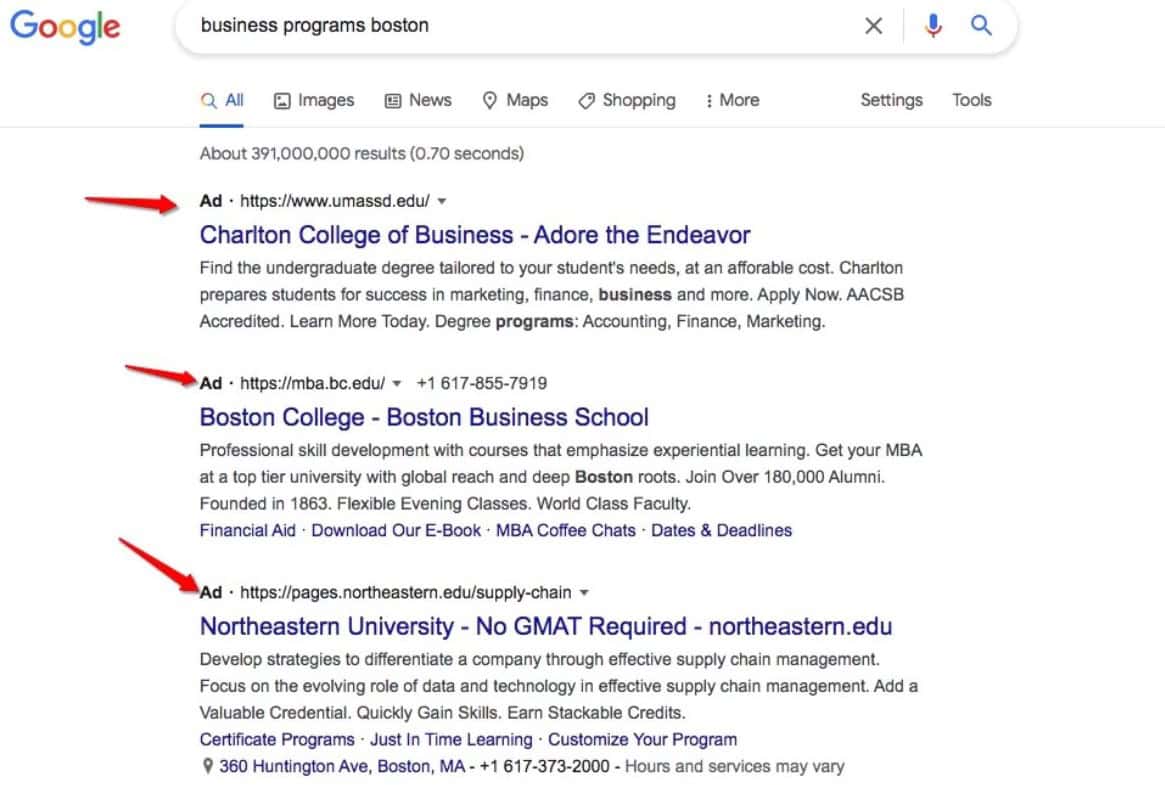
Using a ensures you put more sales and marketing efforts into strategies that are most likely to succeed.
5. Conduct regular market research
Understanding your audience is crucial for lowering CPA. By knowing your audience’s needs, preferences, and behaviors, you can tailor your messaging to be more relevant and engaging.
Market research provides valuable insights into demographic, psychographic, and behavioral data, allowing you to create a customer profile. You can use this profile to refine targeting parameters and choose the right advertising platforms, which leads to:
- Higher engagement
- Better click-through rates
- More conversions.
Here’s an example of one of our ideal customer profile templates you can use:
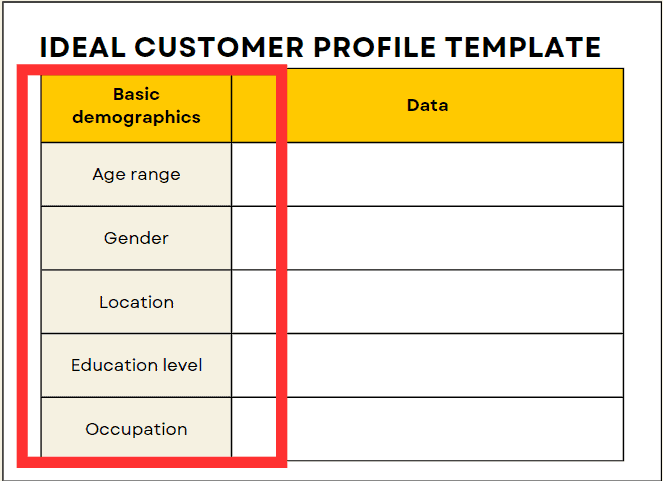
Read also: 10 Amazing Ideal Customer Profile Templates for All Industries
6. Prioritize customer retention
HubSpot revealed that 57% of marketers agree that customer retention is a key strategy for lowering CPA. Why?
- Keeping existing customers is 5 to 25 times less costly than getting new ones.
- Repeat customers spend more over time, increasing their lifetime value (which is another way to lower your CPA).
Ensure you’re allocating the budget for both – acquisition and retention strategies. Focus on creating content that existing customers find useful and relevant. This way, you leverage your initial acquisition investment and reduce the need for further spending.
For example, popular subscription services like Netflix focus on retaining users with personalized recommendations and high-quality content, ensuring long-term loyalty.
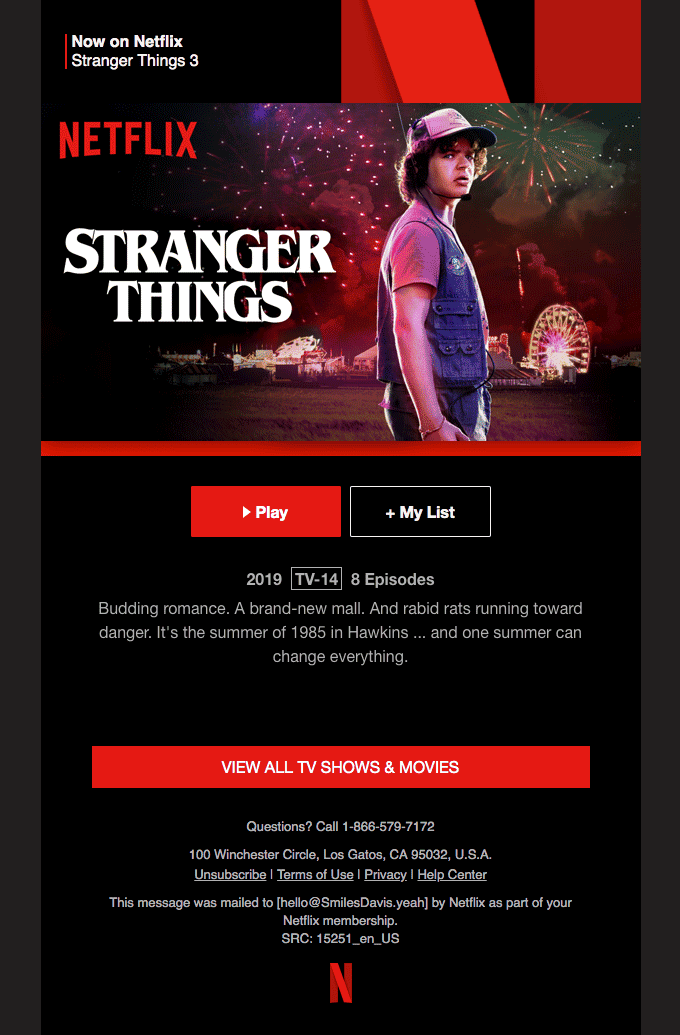
7. Diversifying marketing channels
You don’t want to put all your eggs in one basket. If you focus on one marketing channel, Instagram, you risk facing a high CPA due to channel saturation.
If you primarily use Instagram ads, experiment with platforms like LinkedIn, Google Ads, or emerging channels like TikTok.
There are two benefits of diversifying:
- You’ll reach different audience segments
- You’ll also gather a broader data set to refine your strategies
Conduct channel-specific CPA analysis to see which platforms give you the best return on investment. For example, the ad may perform well on TikTok but not so much on LinkedIn due to the different user demographics and engagement behaviors.
Pro-tip: Repurpose content across channels to maximize your reach without additional marketing costs. For example, check out how this creator cross-posted same content on different channels. 
8. Improve your customer lifetime value
As stated, if you can’t lower CPA, you must increase the LTV for better profitability. Essentially, the more value each customer brings over time, the more you can afford to spend on acquiring them.
To enhance LTV, focus on strategies like upselling, cross-selling, and improving customer retention.
The best example is Apple, which entices users with various product upgrades. For example, buying an iPhone can also get more storage and better care (AppleCare).
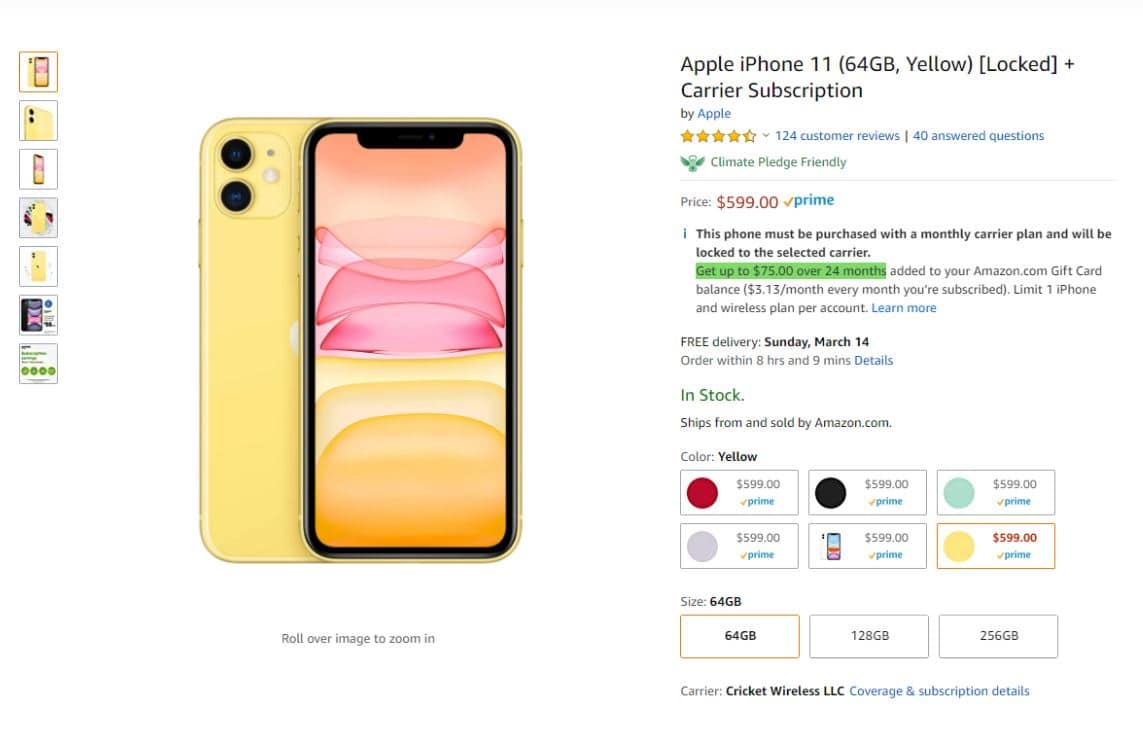
Pro tip: You can also leverage loyalty programs and personalized customer experiences to keep customers returning. A subscription-based service might offer exclusive content or discounts for long-term subscribers, increasing their overall value to the business.
Conclusion
Optimizing your cost per acquisition (CPA) should be a priority if you want maximum returns on your digital marketing efforts. This article provides all the information you need to understand, monitor, track, and optimize your CPA.
EngageBay’s comprehensive CRM system can help you streamline customer acquisition processes, prioritize leads, and optimize your campaigns for better results. Sign up today and start acquiring quality customers without wasting your marketing budget.
FAQ
1. What is the difference between cost per acquisition (CPA) and customer acquisition cost (CAC)?
Cost per Acquisition (CPA) and Customer Acquisition Cost (CAC) are often used interchangeably but serve different purposes. CPA measures the cost to acquire a specific action, such as a click, sign-up, or purchase. It’s broader and can apply to any predefined action within your marketing campaign.
On the other hand, CAC is more focused on measuring the total cost of acquiring a one-paying customer. Essentially, CAC is a subset of CPA, where the focus is strictly on paying customers.
2. How do I calculate my cost per acquisition?
To calculate CPA, divide the total marketing expenses by the number of acquisitions. Here’s the CPA formula:
CPA=Total Marketing Expenses/Number of Acquisitions
Therefore, if you spent $1,000 on marketing in a month and acquired 200 customers, your CPA would be $5 per customer.
3. What factors can influence my cost per acquisition?
Several factors can influence your cost per acquisition, including:
- Stage of the Business: Your business stage’s focus (growth vs. profit-focused) will impact your CPA.
- Budget: The size of your marketing budgets can affect your CPA, with larger budgets potentially allowing for higher CPA in campaigns with broader reach.
- Ad Channels: Different online advertising channels (PPC, social media, content marketing) have unique goals and costs.
- Medium of Acquisition: Secondary efforts like newsletter sign-ups or direct mail listings can influence CPA.
- Customer’s Lifetime Value (LTV): A higher LTV can justify a higher CPA.
- Competition and Market Conditions: Highly competitive markets typically have higher CPAs due to increased bidding on advertising platforms.
4. How do I track and monitor my cost per acquisition over time?
To track and monitor your CPA over time:
- Use UTM Parameters: Generate UTM codes to track different marketing efforts.
- Export PPC Data: Extract campaign data from platforms like Google AdWords for analysis.
- Work with Promotional Codes: Create unique codes and custom links to track internal campaigns.
- Implement a CRM System: Utilize a CRM system to centralize and analyze customer acquisition data.
- Include Source Fields in Forms: Add fields in lead forms to track how customers discovered your campaign.
5. How can I use CPA data to make better marketing decisions?
You can use cost per acquisition data to:
- Evaluate Marketing Efficiency: Determine the cost-effectiveness of your campaigns.
- Optimize Budget Allocation: Allocate your budget to the most cost-effective channels.
- Set Realistic Goals: Define acceptable CPA targets based on revenue goals and LTV.
- Improve marketing ROI: Use CPA data alongside metrics like AOV and LTV to quantify marketing results and optimize strategies.
6. What is the relationship between CPA and LTV?
The relationship between CPA and LTV is crucial for determining the profitability of your marketing efforts:
- LTV to CPA Ratio: A healthy LTV to CPA ratio (e.g., 3:1 or higher) indicates that your marketing is profitable.
- Profitability Indicator: If CPA is close to or exceeds LTV, it signals a potential loss.
- Balancing Growth and Cost: A balanced CPA ensures you’re not overspending on acquiring customers while maintaining profitability.
7. How can I optimize my marketing campaigns to reduce cost per acquisition?
Here are seven strategies to optimize your marketing and reduce CPA:
- Improve Ad Copy and Targeting: Create emotionally resonant and relevant ad content.
- Retarget Non-Converting Customers: Use retargeting campaigns to convert interested prospects.
- Optimize Landing Pages: Design a landing page to enhance user experience and conversion rates.
- Leverage CRM for Lead Building: Use a CRM system to prioritize and target the most promising leads.
- Conduct Regular Market Research: Understand your target audience, including their needs and behaviors, to refine targeting.
- Prioritize Retaining Customers: Focus on retaining existing customers to lower CPA.
- Use different marketing channels: Use multiple channels to reach different audience segments and gather diverse data.
